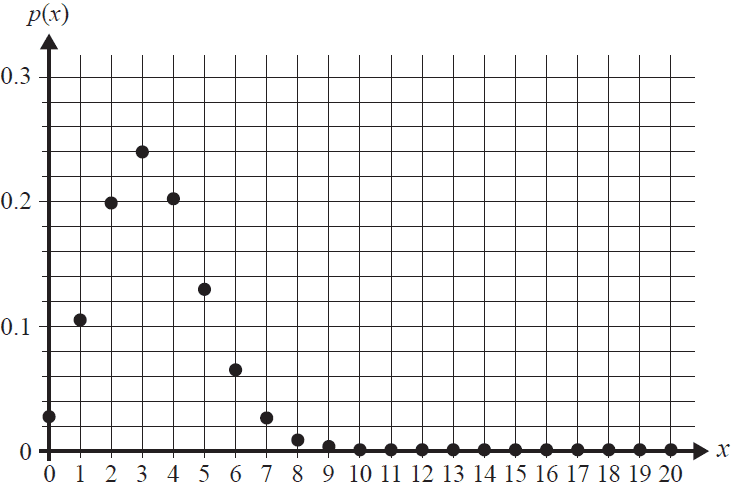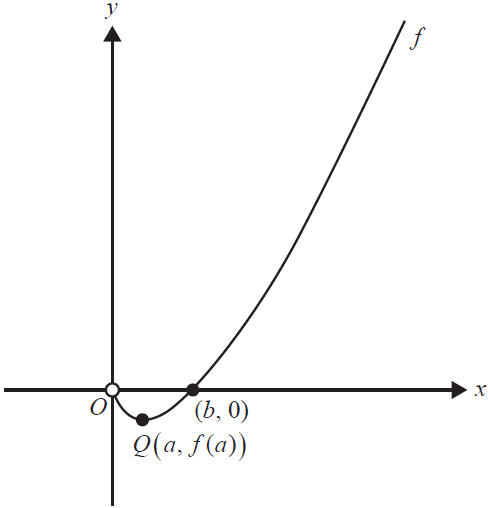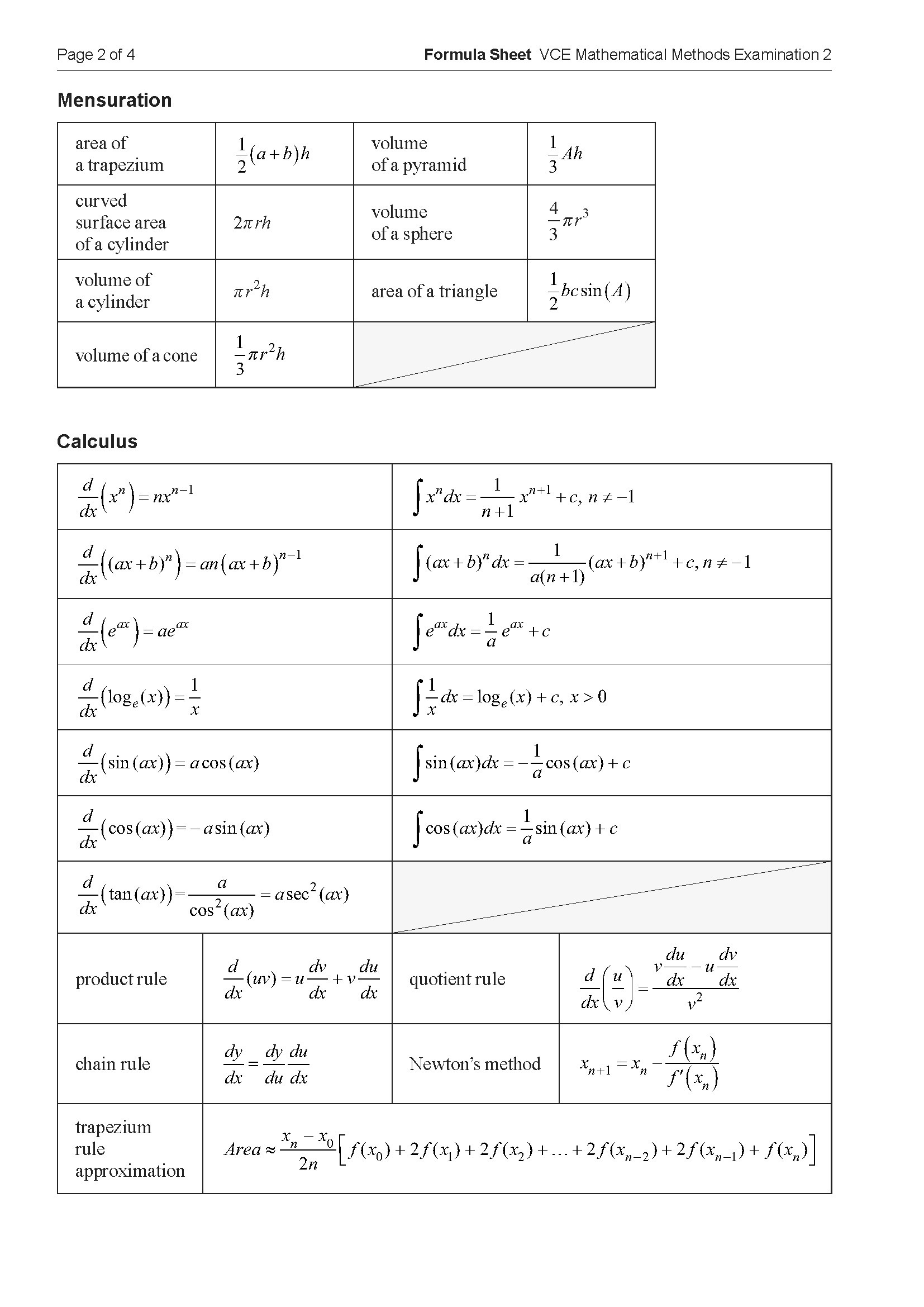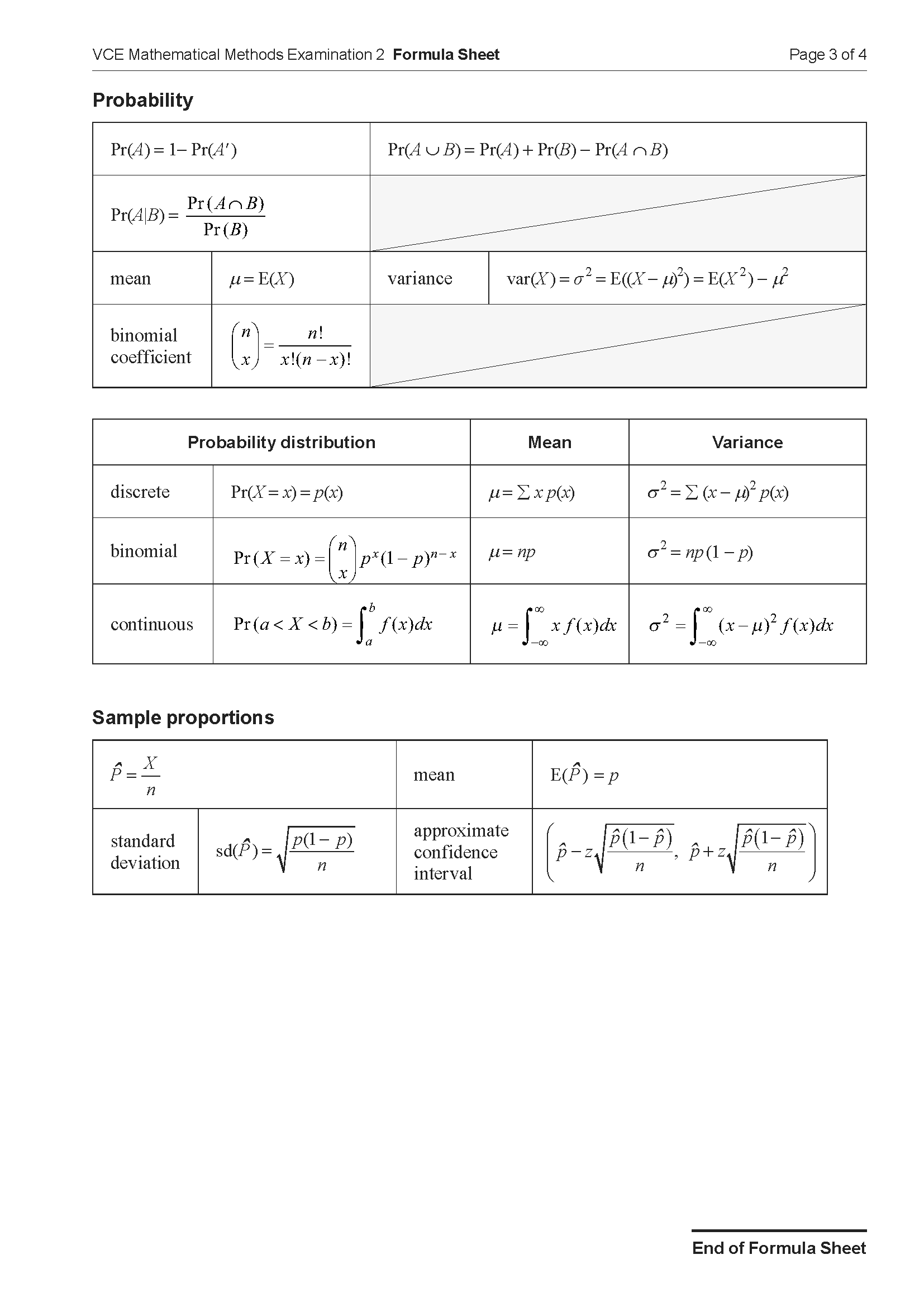2020 VCE Maths Methods Mini Test 11
Number of marks: 8
Reading time: 1 minute
Writing time: 12 minutes
Section A – Calculator Allowed
Instructions
• Answer all questions in pencil on your Multiple-Choice Answer Sheet.
• Choose the response that is correct for the question.
• A correct answer scores 1; an incorrect answer scores 0.
• Marks will not be deducted for incorrect answers.
• No marks will be given if more than one answer is completed for any question.
• Unless otherwise indicated, the diagrams in this book are not drawn to scale.
Shown below is the graph of \(p\), which is the probability function for the number of times, \(x\), that a '6' is rolled on a fair six-sided die in 20 trials.

Let \(q\) be the probability function for the number of times, \(w\), that a '6' is not rolled on a fair six-sided die in 20 trials.
\(q(w)\) is given by
- A. \(p(20-w)\)
- B. \(p\left(1-\frac{w}{20}\right)\)
- C. \(p\left(\frac{w}{20}\right)\)
- D. \(p(w-20)\)
- E. \(1-p(w)\)
Let \(f: R \to R, f(x) = \cos(ax)\), where \(a \in R\setminus\{0\}\), be a function with the property \(f(x) = f(x+h)\), for all \(h \in Z\).
Let \(g: D \to R, g(x) = \log_2(f(x))\) be a function where the range of \(g\) is \([-1, 0]\).
A possible interval for \(D\) is
- A. \(\left[-\frac{1}{4}, \frac{5}{12}\right]\)
- B. \(\left[1, \frac{7}{6}\right]\)
- C. \(\left[-\frac{5}{3}, 2\right]\)
- D. \(\left[-\frac{1}{3}, 0\right]\)
- E. \(\left[-\frac{1}{12}, \frac{1}{4}\right]\)
End of Section A
Section B – No Calculator
Instructions
• Answer all questions in the spaces provided.
• Write your responses in English.
• In questions where a numerical answer is required, an exact value must be given unless otherwise specified.
• In questions where more than one mark is available, appropriate working must be shown.
• Unless otherwise indicated, the diagrams in this book are not drawn to scale.
Part of the graph of \(y = f(x)\), where \(f: (0, \infty) \to \mathbb{R}\), \(f(x) = x\log_e(x)\), is shown below.

The graph of \(f\) has a minimum at the point \(Q(a, f(a))\), as shown above.
a. Find the coordinates of the point \(Q\). 2 marks
b. Using \(\frac{d(x^2\log_e(x))}{dx} = 2x\log_e(x) + x\), show that \(x\log_e(x)\) has an antiderivative \(\frac{x^2\log_e(x)}{2} - \frac{x^2}{4}\). 1 mark
c. Find the area of the region that is bounded by \(f\), the line \(x=a\) and the horizontal axis for \(x \in [a, b]\), where \(b\) is the \(x\)-intercept of \(f\). 2 marks
d. Let \(g: (a, \infty) \to \mathbb{R}\), \(g(x) = f(x) + k\) for \(k \in \mathbb{R}\).
i. Find the value of \(k\) for which \(y=2x\) is a tangent to the graph of \(g\). 1 mark
ii. Find all values of \(k\) for which the graphs of \(g\) and \(g^{-1}\) do not intersect. 2 marks
End of examination questions
VCE is a registered trademark of the VCAA. The VCAA does not endorse or make any warranties regarding this study resource. Past VCE exams and related content can be accessed directly at www.vcaa.vic.edu.au

